More than just an entrance, your front door serves as both a representation of your personal style and the initial impression guests get of your house. When updating your home with double glazing, it’s also worth thinking about your front door colour. The right choice can add value, enhance character, and create a welcoming entrance that feels truly yours.
The CS Windows team has been offering premium doors in Harpenden and surrounding areas for more than a decade, so we know how important it is to choose the perfect front door colour. We’ll go over all you need to know about front door shades in this extensive guide, from timeless classics that never go out of style to stunning modern selections that stand out.
Why Front Door Colours Matter More Than You Think
How people view your house is greatly influenced by the psychology of colour. An article from Ideal Home says a well-chosen front door colour can increase the appeal and value of your home. When selling a house, estate agents often suggest painting the front door to increase its appeal, as it’s one of the most economical methods to do so. A survey from George Barnsdale found that people would spend 25% extra on a house with new brickwork and a newly painted front door.
Emotions and associations are evoked differently by different colours. Red doors, for example, convey warmth and vitality, whereas blue doors imply stability and tranquilly. Because they are linked to harmony and growth, green doors are especially well-liked in garden suburbs like those in Hertfordshire.
When choosing your front door colour, you’ll also need to consider practical factors such as how well different colours show dirt and weathering, how they fade over time, and how they complement your existing exterior colour scheme.
What This Guide Covers:
- Colours For A Front Door: Understanding Your Options
- How To Pick A Front Door Colour
- Coordinating With Double Glazing and Window Frames
- Maintenance and Longevity Considerations
- Planning Permission and Conservation Considerations
- Working With Professional Door Installers
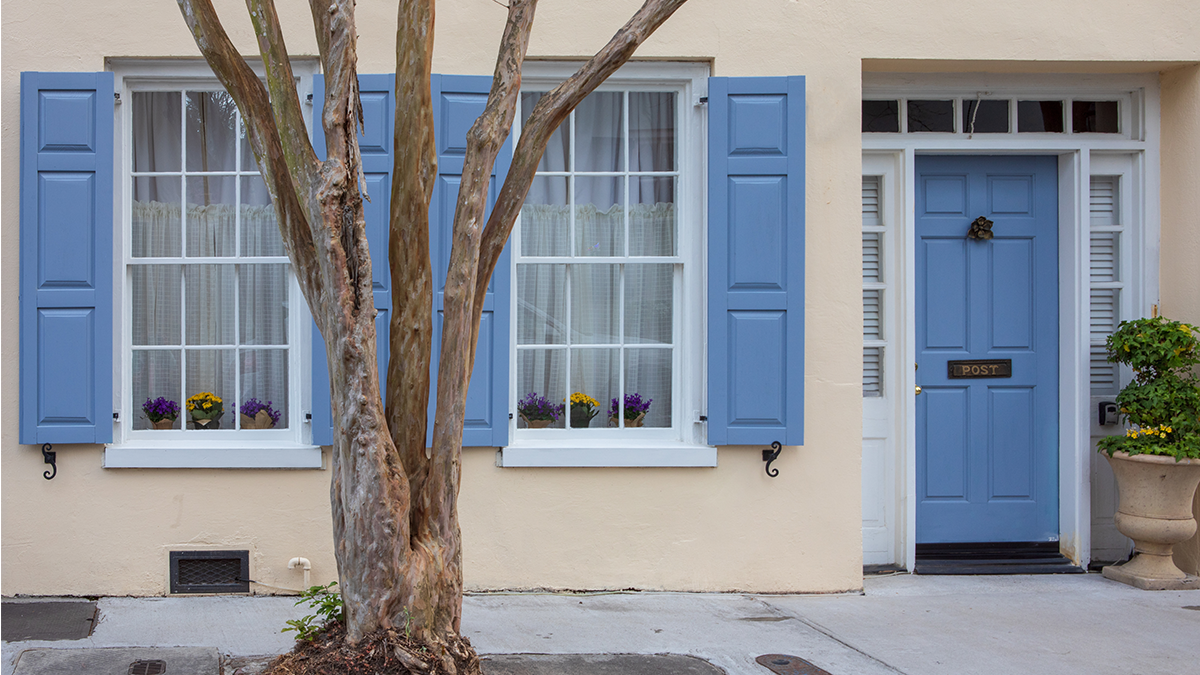
Colours For A Front Door: Understanding Your Options
The world of front door colours has expanded dramatically in recent years. Whilst traditional choices like black, white, and racing green remain popular, homeowners now have access to hundreds of colour options, from subtle greys and creams to vibrant yellows and deep purples.
The key to selecting the right colour is understanding how it will work with your home’s existing features, including roof tiles, window frames, brickwork, and any stone or render details.
Victorian Front Door Colours: Honouring Traditional Style
Victorian homes, which are abundant throughout Hertfordshire, have their own unique requirements when it comes to front door colours. During the Victorian era, front door colours were often dictated by social status and local customs, but today’s homeowners have much more freedom whilst still respecting the period character of their property.
Authentic Victorian Colour Choices:
Victorian homeowners typically chose deep, rich colours that demonstrated prosperity and respectability. Popular options included deep green (often referred to as “Victorian Green”), burgundy, maroon, and dark brown. Black was also common, particularly in London, as it was practical and showed less soot damage from coal fires.
Modern Victorian-Style Options:
Today’s Victorian homeowners can choose from historically appropriate colours that have been updated for modern tastes:
- Heritage Green: A deep, forest green that’s slightly lighter than traditional Victorian green
- Oxford Blue: A rich navy that adds character without being overwhelming
- Claret: A sophisticated, deep red that’s less intense than traditional burgundy
- Charcoal: A modern take on traditional black that’s slightly softer
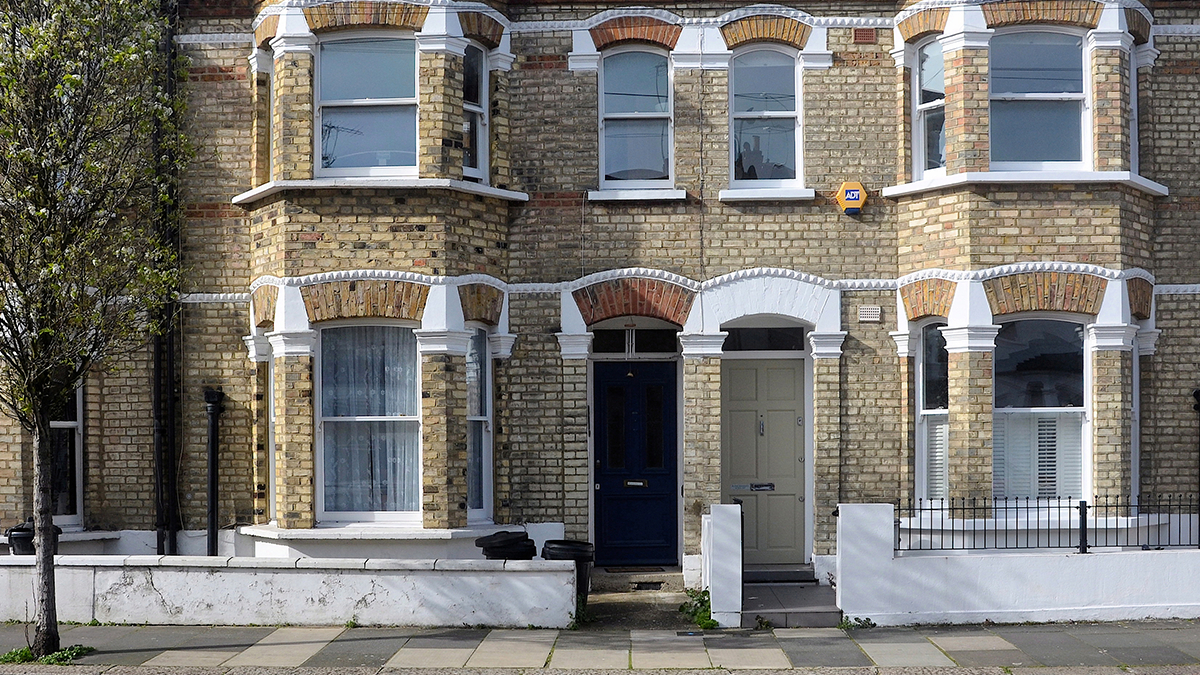
Any local conservation area standards should be taken into account when choosing colours for Victorian houses. Specific exterior colour rules apply in some places, especially for properties in conservation zones or listed buildings.
At CS Windows, we’d recommend that if you’re installing new double glazing in Harpenden or the surrounding areas for your Victorian property, you should coordinate your door colour with your new window frames to create a cohesive look that enhances rather than detracts from your home’s period character.
Contemporary Front Door Colours: Embracing Modern Style
Contemporary homes offer more flexibility when it comes to front door colours, allowing homeowners to experiment with bolder choices and more unusual combinations. Modern architectural styles can handle dramatic colour contrasts and statement-making choices that might overwhelm older properties.
Popular Contemporary Choices:
- Anthracite Grey: Sleek, modern, and works beautifully with glass and steel details
- Pure White: Creates a striking contrast against dark cladding or brick
- Vibrant Orange: Bold, energetic, and perfect for mid-century modern homes
- Deep Purple: Sophisticated, unusual, and creates real kerb appeal
- Bright Yellow: Cheerful, welcoming, and particularly effective on modern townhouses
Colour Blocking Trends:
Colour blocking, in which the colour of the front door is mirrored in other external aspects like garage doors, window shutters, or architectural elements, is a common feature of modern residences. This results in a well-planned appearance that seems deliberate and well-designed.
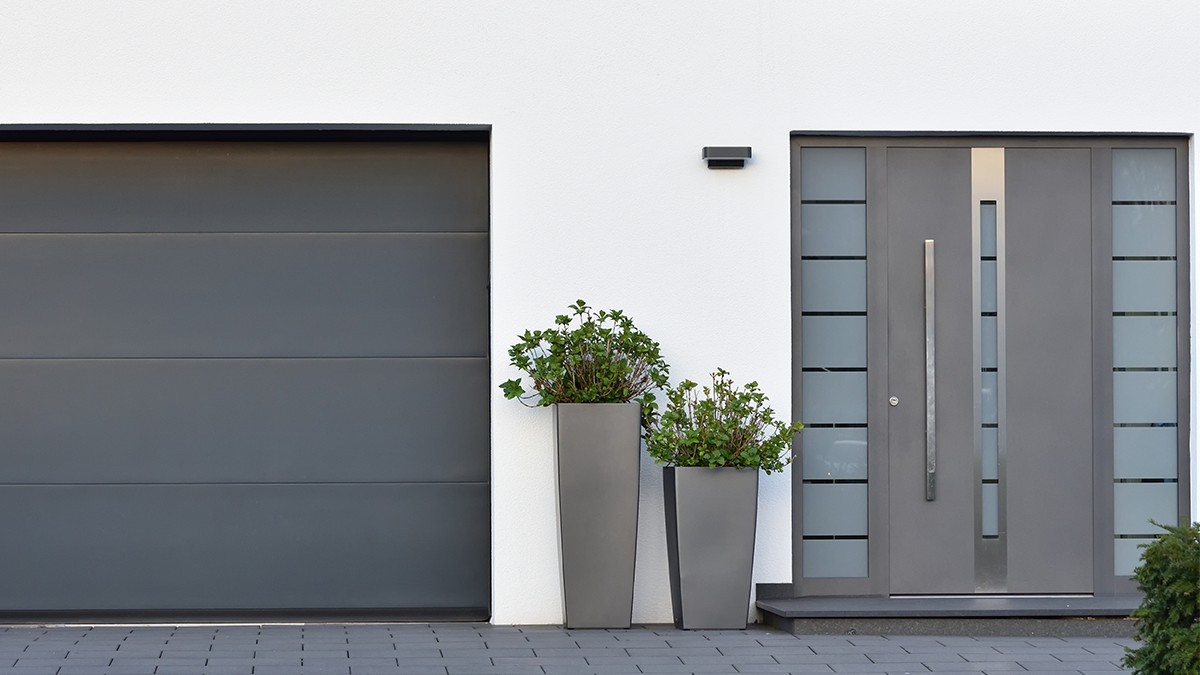
Natural colours and materials are also embraced by contemporary design. Natural wood doors with finishes like oak, walnut, or cedar are becoming more and more popular because they add texture and warmth to contemporary elements like concrete, steel, and glass.
Edwardian Front Door Colours: Balancing Elegance and Practicality
Victorian formality and modern functionality are combined in Edwardian residences, which were constructed between 1901 and 1910. Compared to its Victorian ancestors, these homes frequently have wider windows, lighter interiors, and more relaxed proportions, which allows homeowners greater creative freedom when it comes to front door colour.
Traditional Edwardian Colours:
The Edwardian era saw a move away from the very dark colours of the Victorian period towards lighter, more optimistic shades:
- Sage Green: Softer and lighter than Victorian green
- Duck Egg Blue: Gentle, sophisticated, and very Edwardian in character
- Cream: Warmer and more welcoming than stark white
- Soft Grey: Elegant and practical, showing less dirt than darker colours
Modern Interpretations:
Today’s Edwardian homeowners can choose colours that honour the period whilst meeting contemporary needs:
- Farrow & Ball Green Smoke: A sophisticated grey-green that works beautifully on Edwardian properties
- Soft Lavender: Unusual but period-appropriate, adding character without overwhelming
- Warm Stone: Natural, timeless, and complements Edwardian bay windows beautifully
- Muted Teal: Modern yet sympathetic to the period
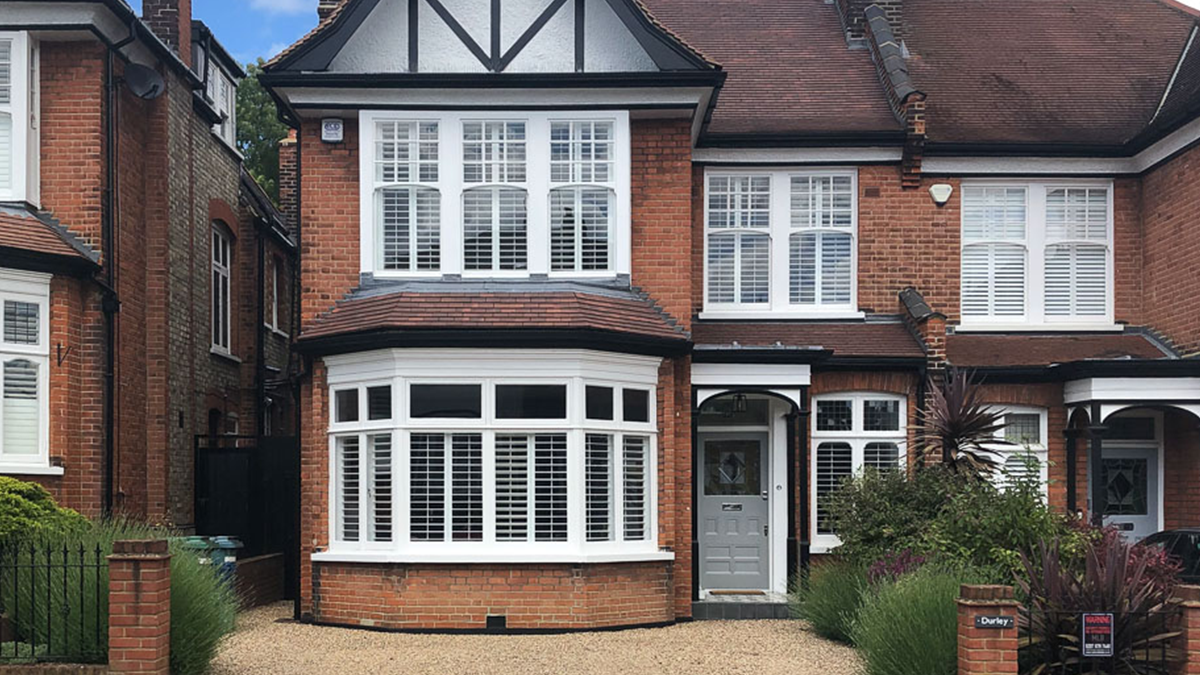
Edwardian properties often feature decorative glass panels in their front doors, which can influence colour choices. Consider how your chosen colour will work with any stained glass or etched glass details.
Modern Front Door Colours: Making a Statement
Modern front door colours are all about personal expression and creating kerb appeal that reflects your individual style. Unlike period properties, which may have historical or conservation constraints, modern homes give you complete freedom to choose colours that make you happy and create the impression you want.
Bold Statement Colours:
For those who want their front door to be a real focal point:
- Bright Coral: Energetic and welcoming, perfect for coastal areas
- Electric Blue: Eye-catching and modern, ideal for contemporary townhouses
- Sunshine Yellow: Cheerful and optimistic, guaranteed to brighten any street
- Deep Plum: Rich, luxurious, and surprisingly sophisticated
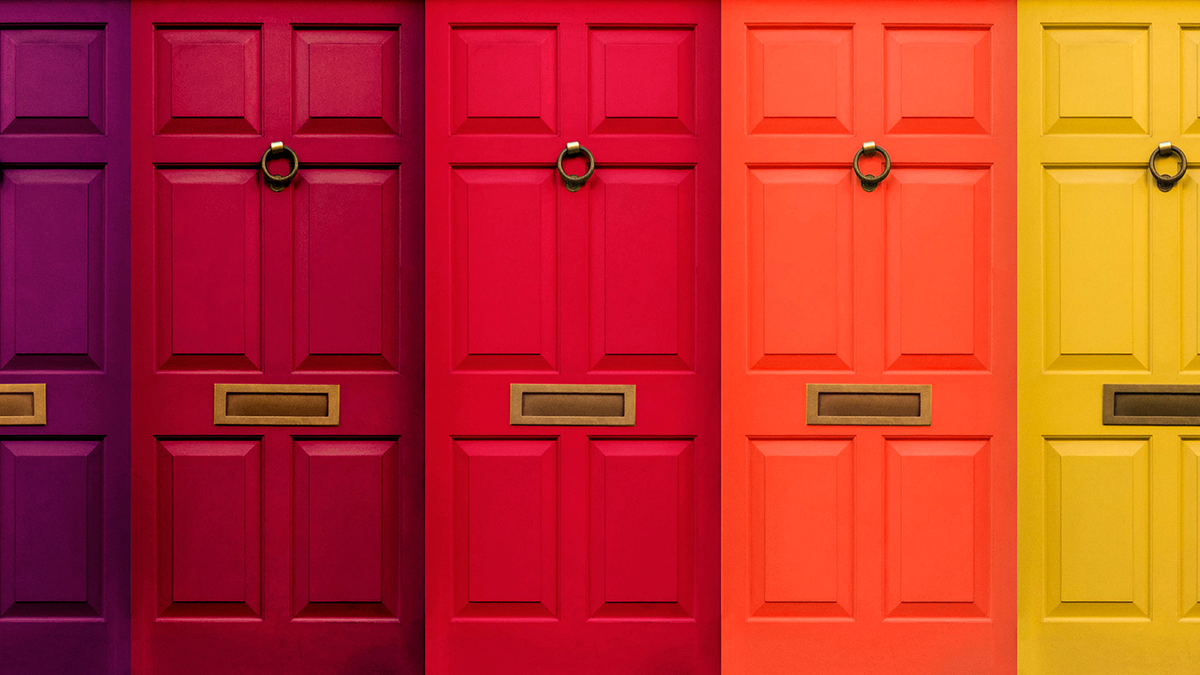
Consider your neighbours and the overall street scene when selecting striking colours. You want your house to be unique, but you also want it to blend in with its surroundings.
How To Pick A Front Door Colour
Selecting the perfect front door colour doesn’t have to be overwhelming. Follow this systematic approach to ensure you make a choice you’ll love for years to come.
Step 1: Assess Your Home’s Style and Architecture
– Look at your property objectively. Is it Victorian, Edwardian, 1930s semi, or modern? Each architectural style suits different colour palettes. Traditional properties often look best with colours that respect their period character, whilst modern homes can handle more dramatic choices.
Step 2: Consider Your Existing Colour Scheme
– Take note of your roof tiles, window frames, brickwork, and any stone or render details. Your front door colour should complement, not clash with, these existing elements. Take photos of your home’s exterior and use these to test potential colours digitally before making your final decision.
Step 3: Think About Your Neighbourhood
– While you want your home to reflect your personality, it should also feel like it belongs in its setting. Consider other properties in your street and the surrounding area. Are there any unwritten rules or common themes? Some areas have a very uniform appearance, whilst others celebrate individuality.
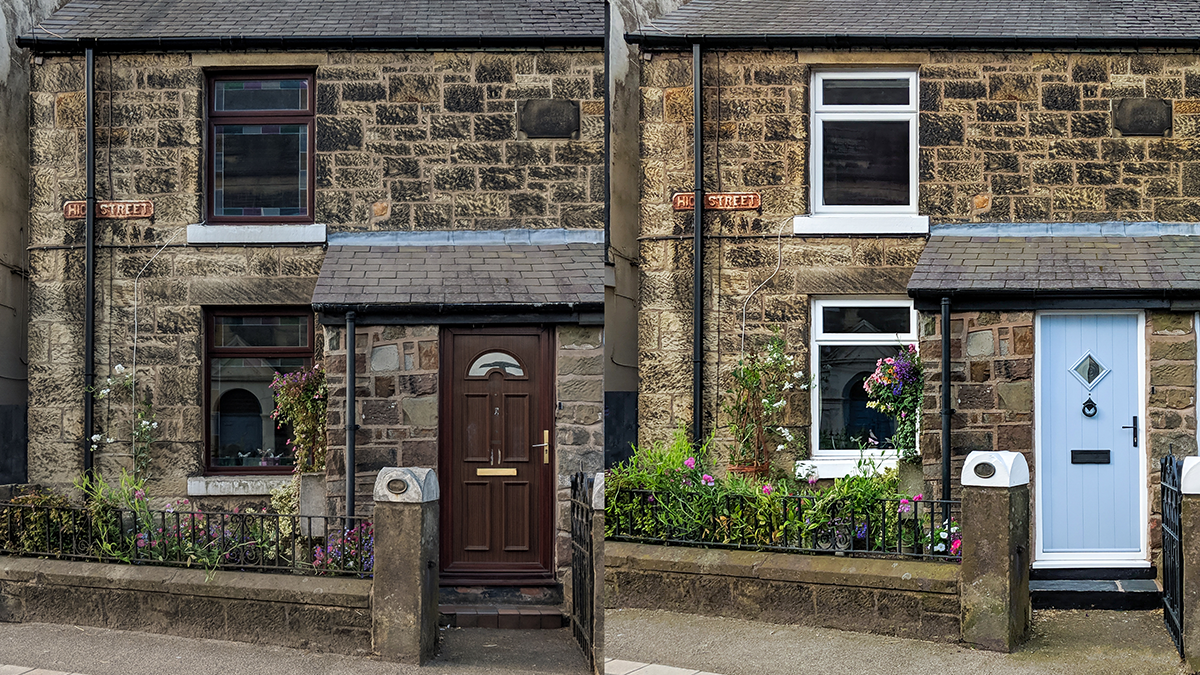
Step 4: Consider Practical Factors
– Some colours are more practical than others:
- Light colours show dirt more easily, but make properties appear larger
- Dark colours are more forgiving with dirt, but can fade more noticeably in strong sunlight
- Bold colours create impact but may date more quickly than classic choices
- Neutral colours are timeless but may lack personality
Step 5: Test Your Choices
– Never choose a front door colour based solely on a small paint sample. Paint large test patches on your door or on boards that you can hold against your entrance. View these at different times of day and in different weather conditions. Colours can look completely different in morning sun versus evening shadow.
Step 6: Consider the Interior
– Your front door colour will be visible from inside your home when the door is open. Ensure it complements your hallway decoration and doesn’t create a jarring contrast when viewed from inside.
Seasonal Considerations:
Think about how your chosen colour will look throughout the year. An article from Good Housekeeping say’s the colour of your front door can change the exterior of your house, so a bright yellow that seems cheerful in summer might feel overwhelming on a grey winter’s day, whilst a deep blue that looks sophisticated in winter might seem gloomy in bright summer sunshine.
Coordinating With Double Glazing and Window Frames
If you’re planning to install new double glazing, coordinating the colour of your front door with that of your window frame is crucial for creating a cohesive exterior appearance.
Matching vs. Contrasting:
- Matching colours creates a unified, coordinated look that’s always elegant
- Contrasting colours can create interest and help architectural features stand out
- Tonal variations (different shades of the same colour family) offer subtlety and sophistication
Popular Combinations:
- White windows with a navy front door: Classic, timeless, and works on most property types
- Grey windows with charcoal front door: Modern, sophisticated, and very current
- Cream windows with sage green front door: Soft, natural, and perfect for period properties
- Black windows with white front door: Bold, contemporary, and creates real impact
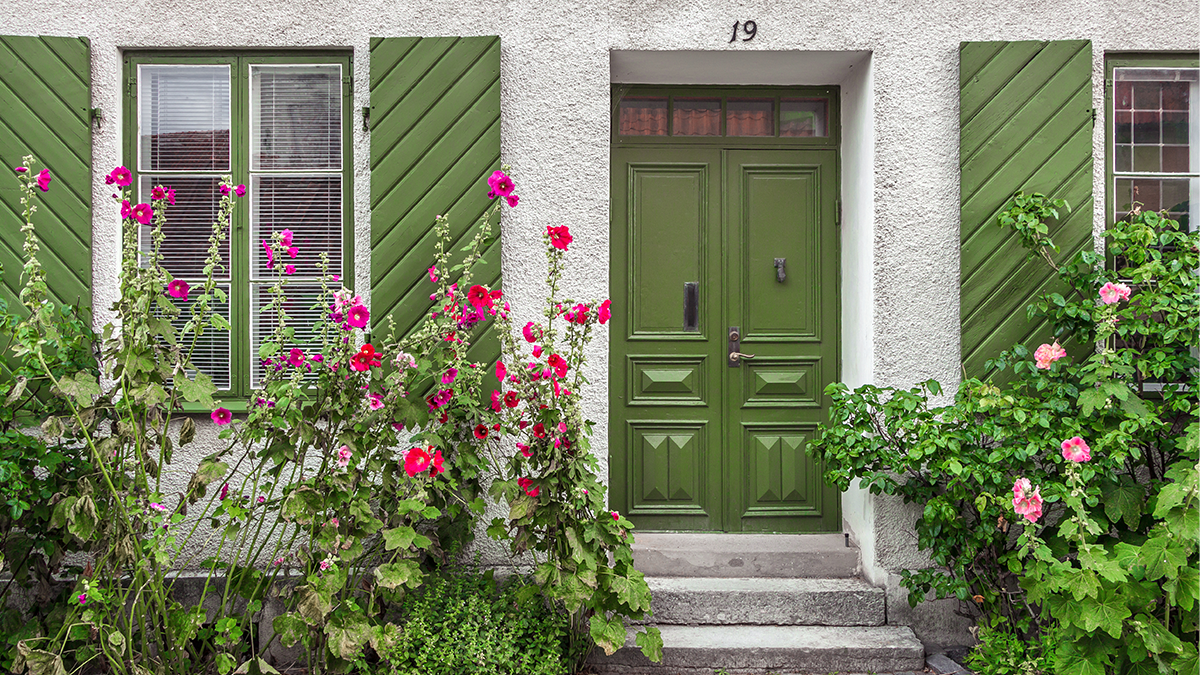
When selecting different types of doors, consider both energy efficiency and the long-term impacts. A front door can be easily repainted, but changing the colour of a window frame typically necessitates a complete replacement. Checkatrade recommends one of the most effective methods to improve our home’s energy efficiency, particularly during periods when expenses are at an all-time high, is to replace our windows and doors.
Maintenance and Longevity Considerations
Different front door colours require different levels of maintenance and have varying lifespans before they need refreshing.
Low-Maintenance Colour Choices:
- Medium greys: Hide dirt well and fade evenly
- Sage greens: Natural colour that weathers attractively
- Navy blues: Deep enough to hide minor imperfections
- Warm creams: Show less fading than pure white
High-Maintenance Colours:
- Pure white: Shows every mark and requires frequent cleaning
- Black: Shows dust, fingerprints, and fading more than other colours
- Bright yellows: Fade noticeably in strong sunlight
- Deep reds: Can fade to pink over time if not properly maintained
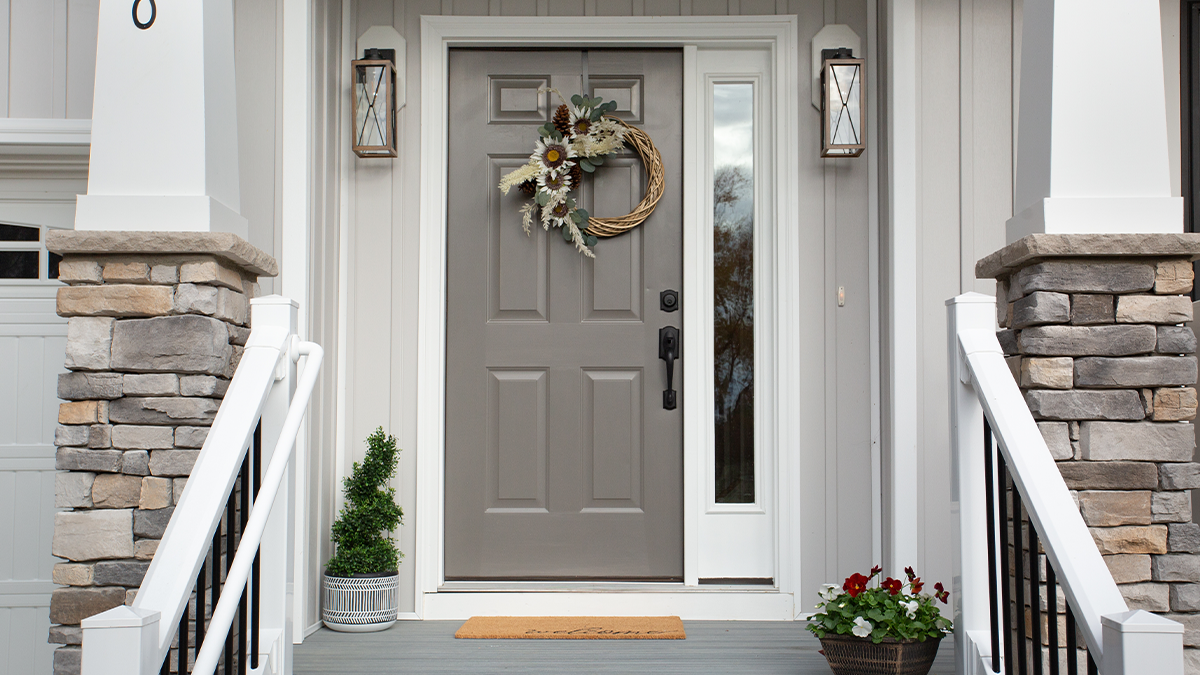
High-quality paint makes a significant difference in longevity. Invest in high-quality exterior paint specifically designed for doors, and consider hiring a professional for the best results.
Planning Permission and Conservation Considerations
In some areas, particularly conservation zones or for listed buildings, your choice of front door colour may be restricted by planning regulations.
When You Might Need Permission:
- Listed buildings: Any external changes usually require listed building consent
- Conservation areas: Some councils have specific colour guidelines
- Article 4 directions: Some areas have additional planning controls
- Leasehold properties: Your lease may specify acceptable colours
Checking Requirements:
Before making any changes, check with:
- Your local planning authority
- Your local conservation officer (if applicable)
- Your lease or estate management company (if applicable)
- Your neighbours (good relationships matter!)
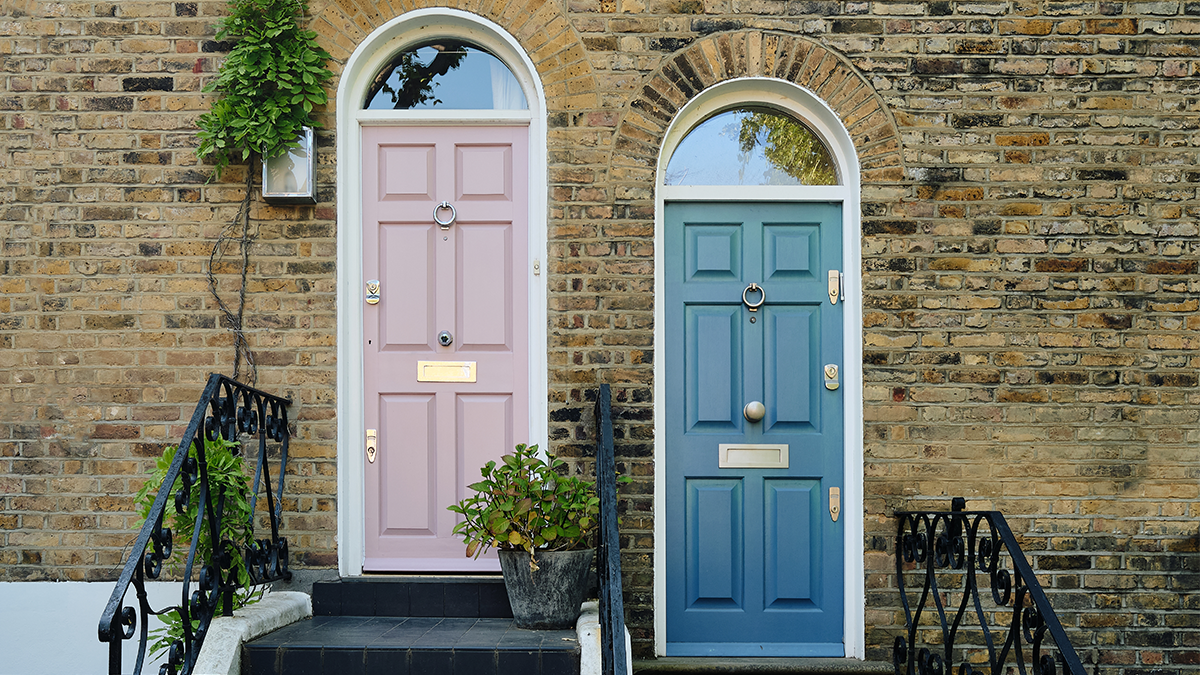
You can paint your front door any colour you like on the majority of residential properties outside of conservation areas, thanks to authorised development rights, but it’s always a good idea to double-check to prevent any issues down the road.
Working With Professional Door Installers
Working with skilled professionals guarantees the highest return on your investment if you’re intending to replace your front door and change the colour.
Benefits of Professional Installation:
- Expert advice on colour choices that suit your property
- Quality materials that will last longer and look better
- Proper installation ensures security, weather resistance, and energy efficiency
- Warranty protection gives you peace of mind
- Coordination with other exterior improvements, like new double glazing
Questions to Ask Your Installer:
- What colours are available in their door range?
- How do different colours affect the price?
- What maintenance will be required?
- How long will the colour last before needing refreshing?
- Can they provide examples of their work in your area?
With more than a decade of expertise in installing doors and double glazing in Harpenden and the surrounding areas, CS Windows understands the importance of helping homeowners choose colours they will love for many years to come. To ensure that your new front door enhances the look and value of your house, our staff can provide samples, guidance, and expert installation.
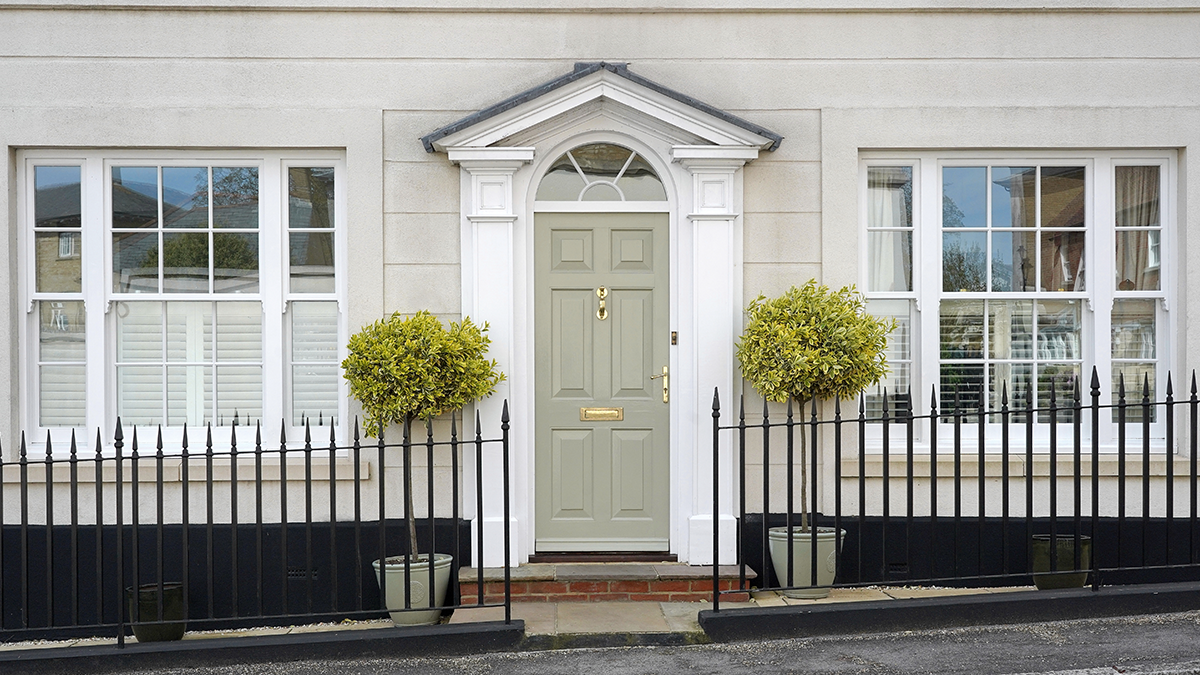
Transform Your Home’s First Impression
Choosing the right front door colour is an investment in your home’s appearance and value. Whether you prefer the timeless elegance of traditional colours or the bold statement of contemporary possibilities, it is important to choose a colour that shows your character and mixes well with the architecture and surroundings of your home.
Keep in mind that your front door is only one component of the external design of your house. The overall beauty of your property is increased when existing features, such as window frames, roofing, and landscaping, are coordinated to create a unified appearance.
At CS Windows, we understand that your front door is more than just an entrance, as it’s a reflection of your home and your style. With our extensive experience in doors in Harpenden and surrounding areas, we’re here to help you choose and install the perfect front door that combines your ideal colour with quality construction and professional installation.

